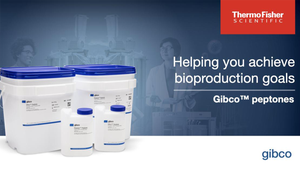Screening Loading Conditions on Capto S with a New High-Throughput Format: PreDictor Plates
July 1, 2008

Figure 1.
Finding optimal conditions for a downstream purification process is critical to achieving high productivity and a robust biopharmaceutical manufacturing process at large scale. In addition, the FDA’s new Quality by design initiative may increase demands on process development work because a higher degree of process understanding must be acquired. This understanding/knowledge can be obtained if a larger experimental space is considered and/or more detailed studies are performed.
The introduction of high-throughput techniques for process development partially addresses these challenges. PreDictor™ 96-well filter plates prefilled with GE Healthcare chromatography media allow parallel screening of conditions for binding, wash, or elution. In this study, Predictor plates were used for screening of loading conditions for conalbumin (a protein showing nontraditional behavior) to the cation exchanger Capto™ S. Corresponding column experiments were run to verify that data correlated between formats.
Experimental Approach
The binding capacity for conalbumin on Capto S was investigated at various ionic strengths (20, 52, 85, 117, and 150 mM) and pH values (4.25, 4.75, and 5.25) using design of experiments (Table 1).
Table 1. The factors investigated, associated ranges, and response (buffer was sodium acetate at ∼20 mM)
Plate Experiments: PreDictor Capto S plates filled with 2 µL of chromatography medium per well were used. A prestudy was run to determine the effect of contact time on binding capacity. Using a suitable plate layout, 200 µL of sample at a concentration of 3.5 mg/mL protein solution was added to each well and incubated for 60 minutes at 1,100 rpm. Samples were collected in UV-readable collection plates, and the concentration of protein was determined spectrophotometrically using lambert- Beer’s law. The binding capacity (q) was calculated thusly: q = (C initial – C flowthrough) × V sample/V medium.
Column Experiments: The dynamic binding capacity at 10% breakthrough (QB10%) at 2 minutes residence time (∼90 minutes loading time) was determined using frontal analysis. Columns used were tricorn™ 5/100 with 2 mL column volume. Buffers were identical to those used in the plate-based experiments. Sample concentration was ∼4 mg/mL.
RESULTS
For all conditions tested, the chromatography medium was saturated with protein after 45 minutes of incubation (Figure 1). Based on this, a contact time of 60 minutes was chosen for the screening study. The results from the screening study in Predictor plates showed nontraditional binding of conalbumin at all pH values, with the highest capacity obtained at pH 4.75 and 85 mM salt (Figure 2, TOP). The capacity optimum shifted toward a higher conductivities as pH decreased, which can be related to a change in the protein net charge. The same results (both regarding optimal binding conditions and capacity shift with pH) were obtained in column chromatography experiments (Figure 1, BOTTOM). Figure 3 compares time and sample amounts spent on this experiment using the different formats. Screening in Predictor plates required less than a tenth of the time in columns, with even larger savings in the amount of sample used.

Figure 1. ()

Figure 2. ()

Figure 3. ()
Conclusions
The optimal conditions for high binding capacity on Capto S found in PreDictor plates show good correlation with conditions identified using traditional packed-bed chromatography. At the same time, PreDictor plates allow for shorter experimental time and lower sample consumption, making them a time-saving and accurate tool for screening chromatographic conditions during process development. For more information ask for application note 28-9258-40.
You May Also Like





